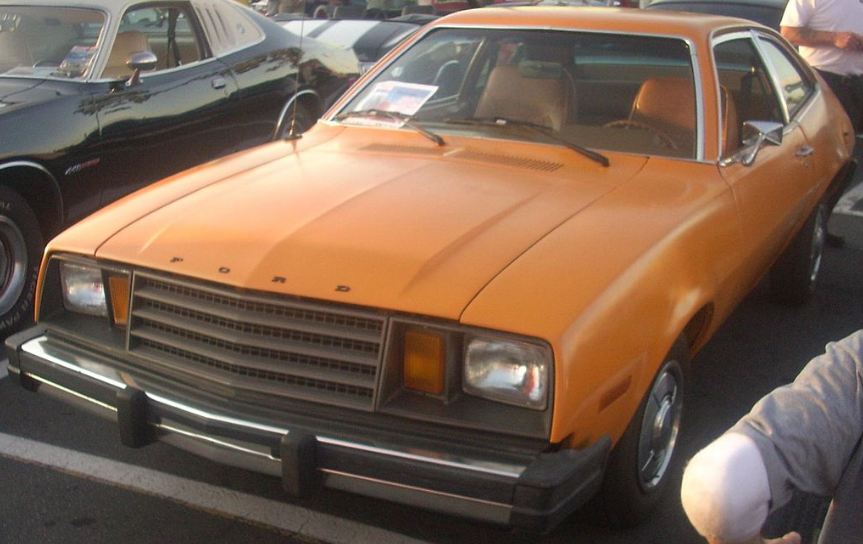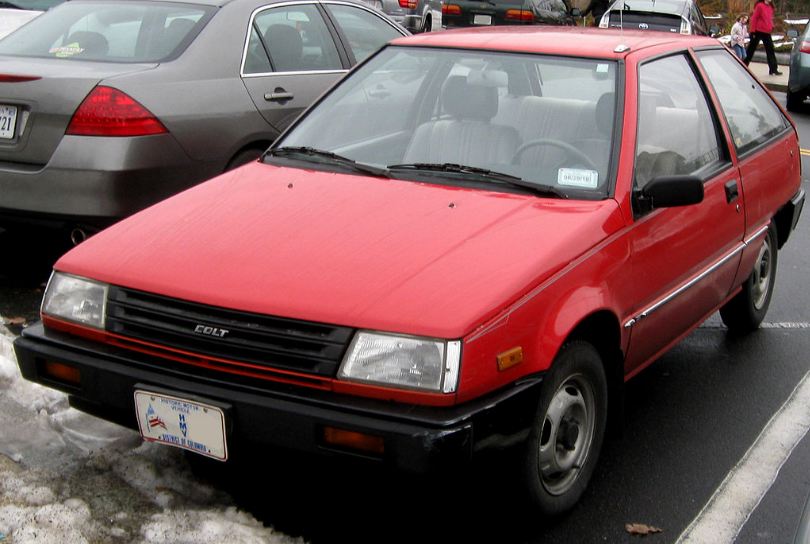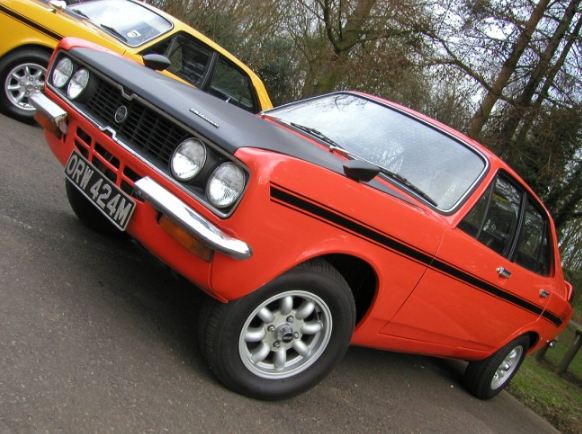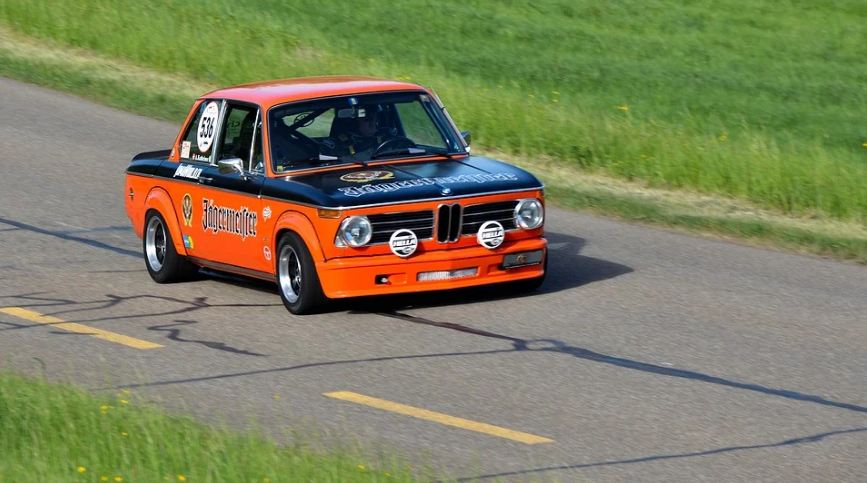It is widely known by many car historians that the 1970s was not a good period for the automobile industry, particularly in the United States. There are many reasons why the car manufacturing industry in the US was failing throughout the 70s, one of which being the 1973 oil crisis, wherein not a lot of drivers were able to afford the skyrocketing price of oil, which led to the sales for production cars decreasing as the months and years went by in the era.
Because of the increasing prices of oil, most car manufacturers have abandoned the production of their muscle cars and pony cars in favor of compact vehicles that consume less gasoline and are much more affordable. The popularity of compact cars led to the trend of simple automobile designs that are practical and functional rather than sophisticated and luxurious, which are the attributes often associated with muscle cars of the 60s. To learn more about the fall and rise of the automobile industry in the era of disco music and space missions, here is the ultimate guide to cars of the 1970s.
The Malaise Era
The decrease in sales for many major car manufacturers in the US, particularly the Big Three (General Motors, Ford, and Chrysler), is often called by historians as the “Malaise Era.” This particularly is said to have started right at the beginning of the 1973 oil crisis, wherein most of the vehicles produced in the United States were powerful but inefficient cars that utilize way too much gasoline.
Because of the dilemma that there were no fuel-efficient vehicles back then in North America, sales for muscle cars and pony cars decreased as people are finding it impractical to buy those vehicles. However, the Volkswagen Beetle, which is considered one of the first compact cars ever made, was quite popular during the 1970s because of its small size and fuel efficiency. Thanks to the Beetle, international manufacturers that had already begun producing compact cars in the 60s were able to become successful in the US market.
As for the car manufacturers in the US, they have struggled at first to compete with international companies to make fuel-efficient vehicles, mainly because the US government was mandating manufacturers to reduce engine efficiency in production models, which would result in the new cars consuming more fuel.
It was only in 1975 when US manufacturers found a way to reduce engine efficiency while also decreasing fuel usage, and that is through the invention of the catalytic converter, an emission control device that transforms toxic gases into less toxic pollutants. By the late 70s, manufacturers in the US had also started to manufacture compact cars to compete with their international rivals, who were already ahead of them in the trend during that specific period. The Malaise Era officially ended in 1983, when the Big Three were able to recover from their losses in the 70s.
Automobile Innovations in the 70s
Despite being a bad era for automobiles, there were several innovations that have been implemented in production vehicles throughout the 1970s. Here is a list of the automobile innovations in the said period.
Catalytic Converter
The catalytic converter is instrumental in saving the automobile manufacturing industry in the United States, as its implementation in 1975 enabled vehicles to be more reliable while also having decreased fuel usage, which is a very crucial feature to have during the oil crisis.
It is believed that the first prototypes for catalytic converters were developed in France in the last years of the 19th century. But, these devices only became known within the industry when Eugene Houdry, a French mechanical engineer who moved to the US in 1930, had applied for a patent for his catalytic converter design. By the mid-1950s, Houdry began improving his design so that it can be used for gasoline engines on cars. In the said period, Houdry was officially awarded the United States Patent 2,742,437.
Cassette Tape Players for Automobiles
It was in the 1970s, right around the time when rock and disco music was quite popular, that cassette tape players for automobiles were invented. The first vehicular cassette player was introduced by Philips in 1968, and by the 1970s, it is found in almost every car produced by several car manufacturers in the US and other countries.
The cassette player was then improved upon by the mid-70s, with cassettes now having new features like longer play times, auto-reverse, noise reduction, and better audio quality. Cassette tape players would continue to become the popular medium for playing songs and other types of audio in vehicles until the late 80s when it was replaced by CD (compact disc) players.
Digital Dashboard
The digital dashboard or electronic instrument cluster offers more accurate calculations for the vehicle’s speedometer and other gauges. The first digital dashboard was installed in the 1976 Aston Martin Lagonda, but because it is a luxury car, there were not a lot of drivers that were able to experience the capabilities of the digital dashboard during the late 70s. But, it was in the 90s that digital dashboards became more affordable, so it subsequently became more accessible to almost everyone that bought a new car during the said era.
Anti-Lock Braking System (ABS)
The anti-lock braking system, also known by its acronym ABS, is another important innovation that has come out of the 70s. However, a version of the ABS for different types of aircraft has already been in use since the 1950s. The anti-lock braking system is primarily utilized to prevent the wheels of the vehicle from locking up while the brakes are activated, which allows the driver to have better control over which direction and distance the vehicle will stop. To learn more about the ABS, you can read our “History of Anti-Lock Brakes” article.
The ABS found its way to land vehicles when the Road Research Laboratory tested the effectiveness of the system on the Royal Enfield Super Meteor motorcycle in 1958. However, because of the expensiveness of the system to be implemented on motorcycles in that era, the project was eventually abandoned. Another experiment on the ABS occurred in the 60s when the all-wheel-drive Ford Zodiac was fitted with the system, but because the system was still expensive in the 60s, the implementation was abandoned again.
Fortunately, it was Chrysler, in partnership with the Bendix Corporation, which revived the ABS and refined it with computerized features that have four sensors and called it the “Sure Brake” in 1971. The Sure Brake was then installed to all the production units of the 1971 Imperial. Because of the reliability of the Sure Brake, many rival manufacturers have also created their own ABS in the 70s.
Most Popular Cars of the 1970s
Even though compact cars were very popular in the 70s, there were still a few muscle cars that still make a buzz within the industry in that period. Luxury cars during that era became novelty items that only collectors and the wealthy were able to own, and although not everybody can afford them, they are still quite popular among many car enthusiasts. Here are the most well-known cars of the 1970s.
Ford Pinto
The Ford Pinto is another subcompact car that was released in the early 70s in order to compete with international manufacturers in the compact car market. The Pinto was produced by the Ford Motor Company from 1971 and 1980 and was particularly known as being the smallest vehicle produced by the company since 1907.
The subcompact vehicle was available in three body styles, which are a 2-door sedan with a trunk, a 2-door station wagon, and a 3-door hatchback. The Ford Pinto was also rebadged as the Mercury Bobcat in Canada from 1974 to 1980.
AMC Gremlin
The AMC Gremlin is one of the first subcompact cars made by US manufacturers, and it would soon start the trend of US-made compact cars that are affordable and fuel-efficient. The Gremlin was manufactured by the American Motors Corporation from 1970 to 1978 and featured a shortened platform with a pronounced kammback tail that makes it look narrower than most vehicles that were popular in the early 70s.
There were 671,475 units of the Gremlin that were made during its eight years of production. These units can come as either a 2-door sedan or a 2-door hatchback. The Gremlin would be retired in 1978 and would be replaced by the AMC Spirit, a restyled version of the Gremlin, in 1979.
Dodge Colt
The Dodge Colt is a rebadged subcompact car that was produced from 1971 to 1994. Although it is marketed under the Dodge brand, the Colt is actually made by Mitsubishi Motors in Japan. On the other hand, it was also marketed under the Plymouth brand as the Plymouth Champ or the Plymouth Colt.
This car was available in four body styles from 1970 to 1973, and these body styles are the 2-door coupe, the 2-door hardtop, the 4-door sedan, and the 5-door station wagon. The first to second generations Colt were rebadged versions of Mitsubishi’s Galant mode, while the third to sixth generations was a rebadged variant of the Lancer and Mirage models. The Dodge Colt was imported by Chrysler to the US in order to compete with Ford and AMC in selling compact cars in the country without manufacturing their own.
Chevrolet Vega
A short-lived subcompact car, the Vega is Chevrolet’s first entry into the compact car market and was manufactured from 1970 to 1977. The Chevrolet Vega was available in four body styles, namely a 2-door notchback sedan, 2-door hatchback, a 2-door station wagon, and a 2-door panel delivery or blind van.
Although it was praised as one of the best subcompact cars during its early years of production, and it has even won the Motor Trend Car of the Year Award in 1971, the Chevrolet Vega became known later on as a car that is plagued with problems when it comes to its reliability and safety. Because of its tarnished reputation around the mid-70s, Chevrolet had no choice but to discontinue the line in 1977. The Vega would then be replaced with another short-lived subcompact car called the Monza, which was produced from 1974 to 1980.
Plymouth Cricket
The Plymouth Cricket is marketed as a rear-wheel drive small family car by Chrysler from 1970 to 1981. The Cricket was originally manufactured by Rootes Motors Limited, a division under Chrysler Europe. This vehicle was sold with different names, like the Plymouth Cricket (in North America), and Chrysler Avenger (in Europe), and the Talbot Avenger (when it was manufactured by PSA Peugeot Citroen from 1979 to 1981).
The Cricket is regarded as one of the most popular cars in Britain during the 70s, although it would quickly lose its popularity by the mid-70s when the Volkswagen Golf, a more compact and affordable car, was introduced in 1974. To compete with Volkswagen, Chrysler shifted their focus on marketing its new model, the Horizon, in 1978.
BMW 2002 Turbo
The BMW 2002 Turbo is the turbocharged version of the BMW 2002, a compact executive car produced from 1966 to 1967 by German automobile company BMW. The BMW 2002 is supposed to be a shorter or narrower version of the BMW New Class sedan, which was a popular model in the 60s.
The 2002 is the second generation of the BMW 02 series and features a 2-liter engine and an optional 3-speed automatic transmission. The turbocharged 2002 Turbo was introduced at the Frankfurt Motor Show in 1973 as BMW’s first turbocharged car that is faster and more durable than the base 2002 model. The BMW 2002 Turbo had a top speed of 211 kilometers per hour, which is made possible thanks to the improved 2002 tii engine and a KK&K turbocharger.
Datsun 510
Inspired by BMW’s 02 series, Nissan created their own compact executive car called the Datsun 510, a series of the Datsun Bluebird that was produced from 1967 to 1973 and was offered to various countries, including the US and Canada. The Datsun 510 features a SOHC (overhead camshaft engine) engine, semi-trailing arm suspension at the back of the vehicle, and MacPherson strut suspension at the front.
When it was released in October 1967, there was only one body style offered by Nissan, but other body styles were then introduced just one year after. The initial body style was the 4-door sedan, and the additional body styles were the 2-door sedan introduced in June 1968 and the 2-door coupe and 5-door station wagon offered in November 1968. The Datsun 510 is one of Nissan’s first successful exported vehicles, and it would soon pave the way for Nissan to become a powerhouse in the automobile industry.
Dodge Charger
The Charger is one of the few muscle cars that survive the compact car trend in the United States, as it remained a popular luxury vehicle for elite car collectors during the mid-70s. However, its fame wouldn’t last long by the late-70s, and Dodge had to revive, rebrand, and restyle the Charger line. The Charger was introduced in 1966, and as of 2021, it has been produced through seven generations. The two generations from the 70s, the third and fourth generations, were arguably the most popular iterations of the Charger, as they still have a relatively high resale value today.
What’s interesting about the 70s Charger was that it was discontinued in 1978 following the decrease in sales due to the overwhelming popularity of compact cars. However, the Charger name was revived in 1982, but instead of a muscle car, the 80s Charger was a subcompact vehicle that was introduced as Dodger’s flagship model for the compact car market. So, the 70s models were the last muscle cars under the Charger name.
The 1970s was a bizarre period for the automobile industry, as the trends in car design and features quickly shifted from luxurious muscle cars to affordable compact cars. Even though many consider the 70s as an unfortunate era for automobiles, there is no denying that it still molded what the industry would become in the 80s and beyond, as drivers are becoming more enamored towards reliability rather than beauty when it comes to cars.
Popular Car Manufacturers in the 70s
The Best Cars and Most Popular Cars
- Top 10 Greatest Cars Ever Made
- American Made Cars that are Popular Internationally
- Iconic Cars of the 50s
- Iconic Cars of the 60s
- Iconic Cars of the 70s
- Iconic Cars of the 80s
- Iconic Cars of the 90s
- Iconic Cars of the 2000s
- Iconic Cars of the 2010s
- Most Popular Racing Cars of the 1950s
- Most Popular Cars of the 1970s
- Most Popular Racing Cars of the 1980s
- Muscle Cars of the 50s and 60s
-
The Best Cars Made in the 70s -
The Worst Cars Made in the 70s - The Most Expensive Luxury Cars of the 1970s







